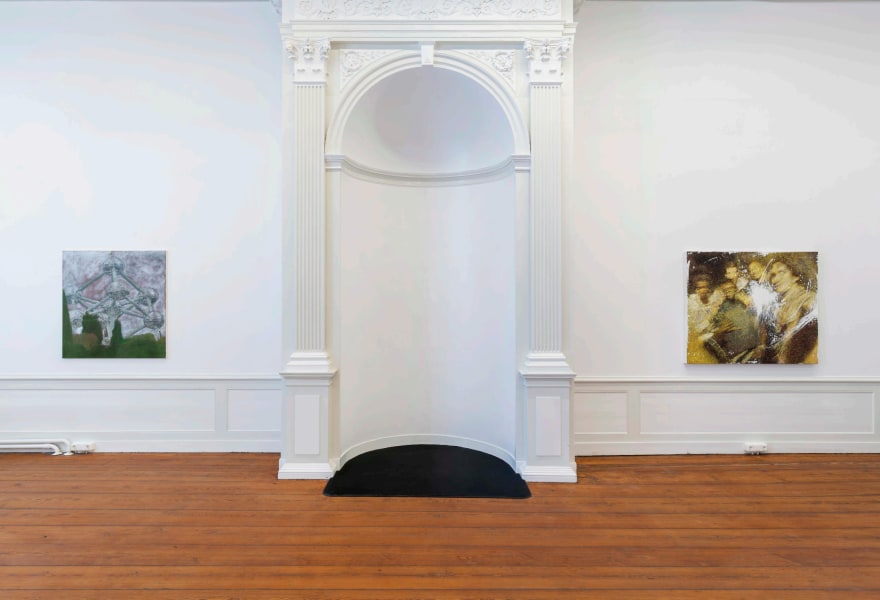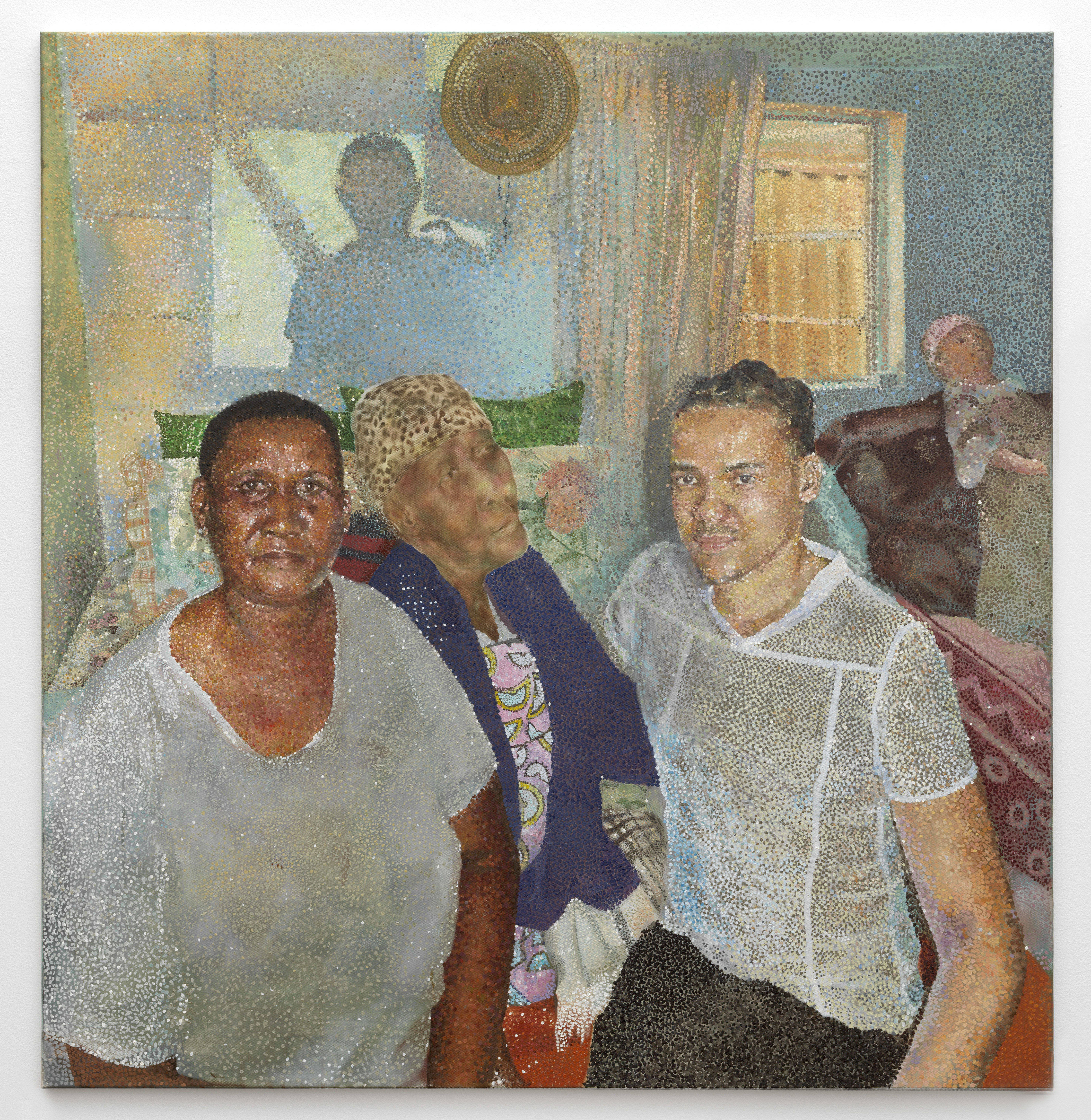09 june 2025, Flor Linckens
Joseph Thabang Palframan rewrites portraits in paint: pixel by pixel
Until 21 June, Upstream Gallery in Amsterdam presents the solo exhibition 'Everybody Wants to Be a Rolling Stone' by Joseph Thabang Palframan. This artist continuously moves between different worlds. He was born in Namibia, grew up in England and Botswana, completed two degrees simultaneously in the Netherlands and currently lives in Belgium. His bicultural background, with roots in both Africa and Europe, also forms a foundation of his work.
His practice is an ongoing exploration and reconciliation of intersecting lines: between continents, cultures, identities, visual languages and complex post- and precolonial histories and their lasting legacies. His focus lies precisely at these intersections, on what becomes visible and what is filtered out, on who is represented and who disappears from view. In his paintings, he turns that dynamic inside out. What begins as a portrait is gradually constructed and interrupted.
Joseph Thabang Palframan was born in 1997 in Windhoek, Namibia. He studied at Leeds College of Art, followed by degrees in Fine Art at the Royal Academy of Art in The Hague and Art History at Leiden University. His graduation research focused on mystification in art institutions, on how narratives are constructed but also obscured. This line of inquiry continues in his painting practice, where demystification does not mean stripping something bare, but instead allows space for a new kind of layering, for the coexistence of multiple realities. Palframan’s work is deeply rooted in a broader historical and cultural context, often approached from an academic perspective.
In his recent paintings, Palframan combines pointillist techniques with digital image logic. Just as pixels come together to form an image on a screen, his paintings emerge from dots that suggest a fragmented and constructed whole. As in our digital reality, meaning only arises through the relationship between individual parts. Palframan examines how this technique relates to scientific and technological progress and how it distances itself from classical realism. But just as the image begins to take shape, he intervenes. With white paint he disrupts the coherence. White dots and strokes break the image, yet at the same time open it up to a new direction. Rather than hiding disruption and tension, Palframan brings them to the fore. Erasure here is not a form of disappearance but of rewriting.
White paint functions as a conceptual anchor in his work. Not as an empty space but as a statement. The colour white – and whiteness – is rarely neutral. It masks, disturbs, displaces and claims both space and norm. Palframan links this to broader questions about representation and appropriation. The title of the exhibition refers to The Rolling Stones, a band whose sound was deeply rooted in African American blues. Yet it is their faces and name that dominate the cultural memory, while the music’s origin remains in the shadows. That same dynamic, in which Black creativity feeds white visibility, can also be seen throughout art history. Palframan’s work does not offer a simple answer to this, but instead presents something else: disruption as an invitation to look again. An addition or transformation rather than an erasure. A form of resistance, a break in dominant systems. Because what is covered never truly disappears, and becomes the foundation of the new image.
Palframan’s visual language is grounded in both African and European art history and is shaped by influences such as Dumile Feni, Thami Mnyele and Sam Nzima. At the same time, he draws on contemporary culture, including hip-hop videos and protest imagery.
Alongside his studio practice, Palframan develops participatory projects, working from Cas-co in Leuven. He completed a residency at AVL Mundo in Rotterdam after winning the Ron Mandos Best of Graduates award, and his work is now part of the collection of Museum M.



